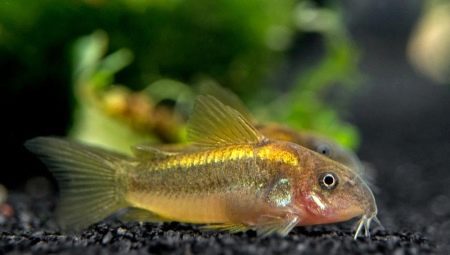A huge selection of decorative fish for the aquarium is striking in its diversity. Among many types and colors, everyone can find something suitable for themselves. In this article, we will consider one of the interesting aquarium catfish - the golden corridor. We will analyze the features of maintaining and caring for this bright and interesting fish.
Description
Golden corridor is a small catfish of bright color, which remains in memory for a long time. With its colorful coloring, it resembles a goldfish. He is a native of South America, a pond of Venezuela, Cara Boba. This catfish lives in Lake Valencia and the surrounding waters with clean, cool water. The life in the aquarium is 5–6 years, depending on the conditions of detention.
This catfish belongs to the family of armored catfish due to the covering of the whole body with bone plates located in 2 rows. These records resemble parquet laid on the floor. Such a structure gave this som a second name, "armored catfish." The described catfish is unpretentious in care and has a high level of survival. It is suitable for beginners to maintain, but can often be found among experienced aquarists. This species has intestinal respiration and sometimes rises to the surface behind a breath of fresh air.
Golden corridor is a small fish. Females grow in length no more than 7 cm, males - 5-6 cm. It’s easy to distinguish a female from a male - females look larger and fuller, males look slimmer. The dorsal fin is rounded in females and pointed in males. Corridors differ in their color. On the shelves you can find these fish in bronze, green, white (albino) and black.
Unscrupulous sellers intentionally stain these catfish in a beautiful golden color by injection, which negatively affects the health of the fish.
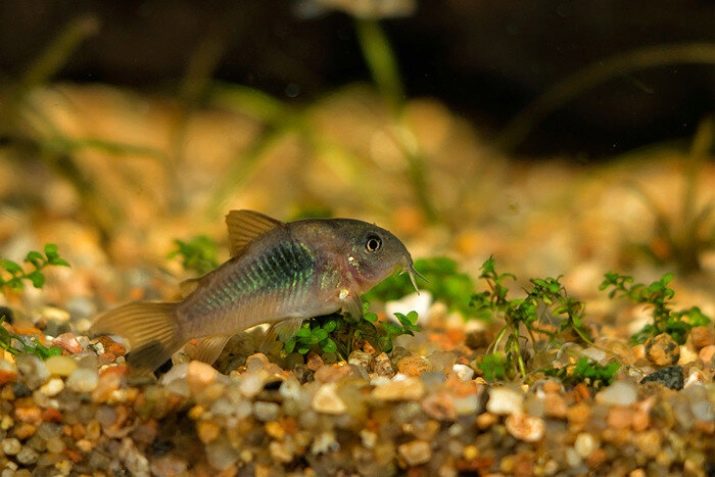
How to contain?
To maintain a golden corridor, an aquarium from 50 liters with a weekly water change of up to 30% is suitable. Mandatory requirements for the design of a home reservoir will be the following:
- availability of free space for swimming;
- the presence of snags, grottoes, a heap of stones in which this fish can hide and rest;
- sand or pebble without sharp edges is good as soil, so that the catfish does not hurt its antennae.
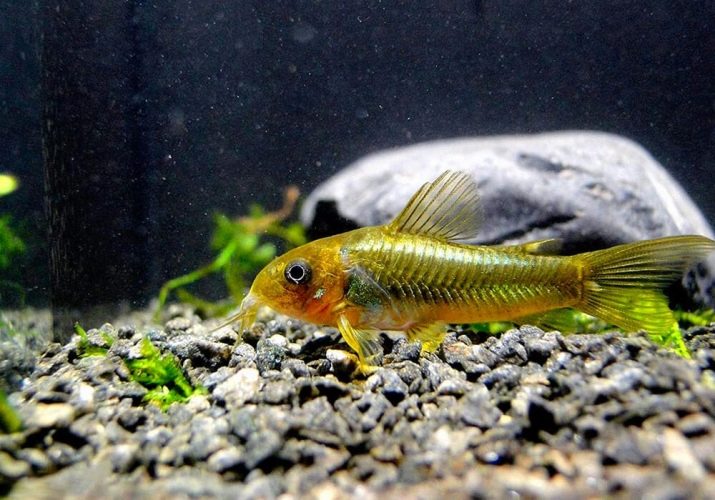
It is desirable to maintain stable water parameters, and the level of nitrates should be at a minimum. Otherwise, as mentioned earlier, this catfish is unpretentious both in care and in feeding. He eats all kinds of food - whether it is live options, cereals, granules or tablets for ground catfish. He prefers to pick up food from the bottom, which allows him to be attributed to the orderly aquarium bottom.
To ensure comfortable conditions, good aeration, filtration and the presence of a lid on the aquarium with the ability to access the air will be required. If you notice that catfish constantly pop up to breathe, it means that there is not enough oxygen in the water. The water temperature should be from +22 to +26 degrees. They do not tolerate the salt content in the aquarium.
The fish is a schooling, the best option would be to keep them in a school of 5 individuals.
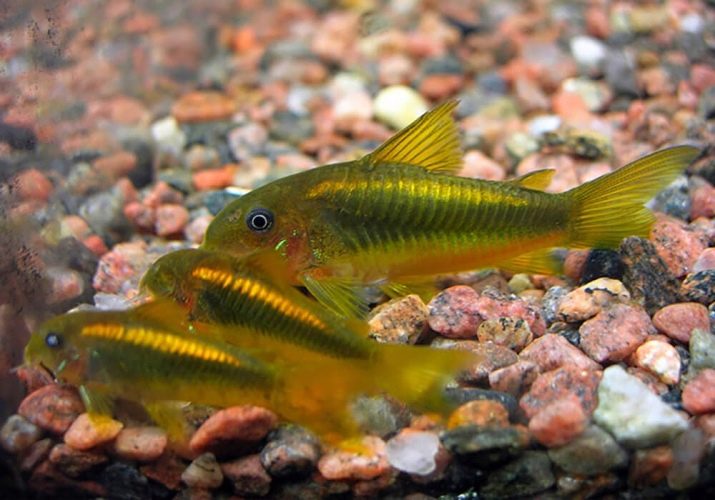
Compatibility
Golden catfish is very calm and peaceful. He gets along with all kinds of peaceful fish and even shrimp (in most cases). Neighbors should be similar in size. Do not settle such a baby with large cichlids - they will not allow him to live normally, but will constantly drive around the aquarium.
All barbs, except cherry, are the worst enemies for the golden corridor. The fact is that the barbus is a very frisky fish that lives in the middle layers of the water, while the catfish is slow and at the bottom. Although this catfish is called armored, its dorsal fin has no protection and is an excellent target for a barbus. Tearing it to shreds, the catfish will die after some time.
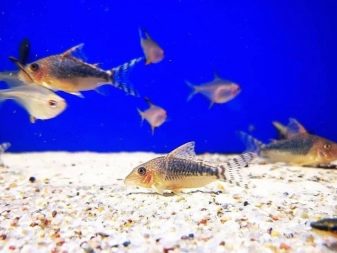
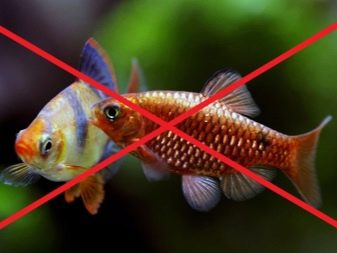
How to breed?
These fish become capable of breeding at the age of 1 year. In breeding, they are simple. For successful spawning, 1 female will require at least 2 males. By acquiring a flock of 5–8 adolescent individuals that are poorly distinguished by sex, we can expect a greater likelihood of having a male and a female.
These fish can spawn in the general aquarium, but in order to preserve the offspring, the correct solution would be to allocate a separate spawning tank with a volume of at least 100 liters, with good air purge and filtration, which creates a weak current. It is advisable to plant a flock of 2–3 males and 1 female for spawning. A larger number of fish is allowed, the main thing is the predominance of males.
Before spawning, males and females should be divided into different aquariums and fed with live food. A spawning signal is a drop in water temperature by 2–3 degrees (as in the rainy season). Lowering the temperature pressure can add to the chances of a successful spawning. At the beginning of spawning, females begin to move faster around the aquarium (as if in search), and males will begin to chase them.
When the pair is ready for the process, the individuals assume a position resembling the letter “T”. The female rests her head on the male’s stomach and begins to spawn, and the male releases milk at this time. With the help of fins, the female moves the fertilized eggs to the nearest, suitable place.
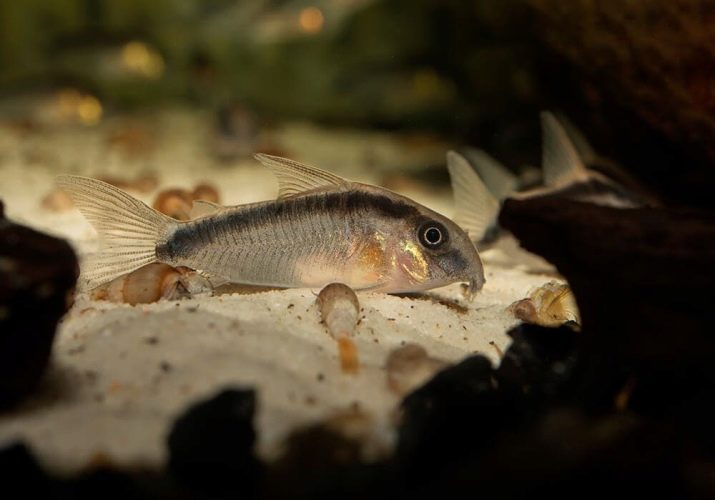
The female lays several eggs on the leaves of plants, stones, glass of the aquarium. From 1 female, you can get up to 200 eggs. It all depends on the size, conditions of detention and age. Spawning can take place for 2 days and all this time parents need to be fed. Starvation can cause individuals to eat caviar.
At the end of spawning, parents must be removed.When your catfish spawned in a common aquarium, it is best to remove the eggs in a separate tank with water from the common one along with the substrate on which it is glued. The main thing is the presence of aeration and filtration in the tank. If the caviar is glued to the glass, it can be cut with a blade, only this process should be as accurate as possible to maintain the integrity of the eggs. After 3-5 days of constant air purging, larvae appear, and another day later the fry will swim. You can start feeding them egg yolk, ciliates and starter food for fry and spawning fish.
Gradually, babies can be transferred to larger feeds: finely chopped bloodworms or tubule.

How to choose a fish?
As a rule, in most pet stores do not really care about the condition of the fish. Before buying, carefully inspect the purchased individual. Healthy fish must meet the following requirements:
- to be active;
- to swim confidently;
- have no defects on the mustache;
- to have healthy, not damaged gills without inflammation.
It should be noted that brown spots indicate a fungal infection. There should not be any extraneous spots on the fish, as well as on other inhabitants located in the pet store (infections are transmitted to the fish by airborne droplets), if 1 aquarium is infected, everyone is infected. The belly of the golden corridor should not be sunken - this indicates that the fish suffers from worms.
A randomly floating fish or one floating sideways will immediately catch your eye - such an individual does not have long to live.

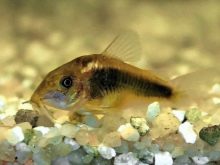
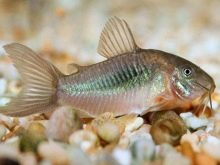
But even such a careful choice will not protect you from unforeseen fish diseases. When you bring the fish you bought home (there can be any kind of corridor - not only gold, but also veil, panda, militia or another), do not plant it in a common aquarium, moreover, do not pour someone else's water into your tanks. It is advisable to keep the individual at least 10 days in quarantine in another room.
At the end of the allotted time, if there are no visible changes on the catfish, Do not rush to transplant it into the main aquarium, but put one fish of a common reservoir in it in quarantine. This is done because catfish may not be sick, but be a carrier of the disease. Such a simple procedure will help determine the presence of a disease without infecting your entire aquarium. This procedure applies to all types of fish that you wish to settle in your tank.
About how to breed a golden corridor, see the next video.
